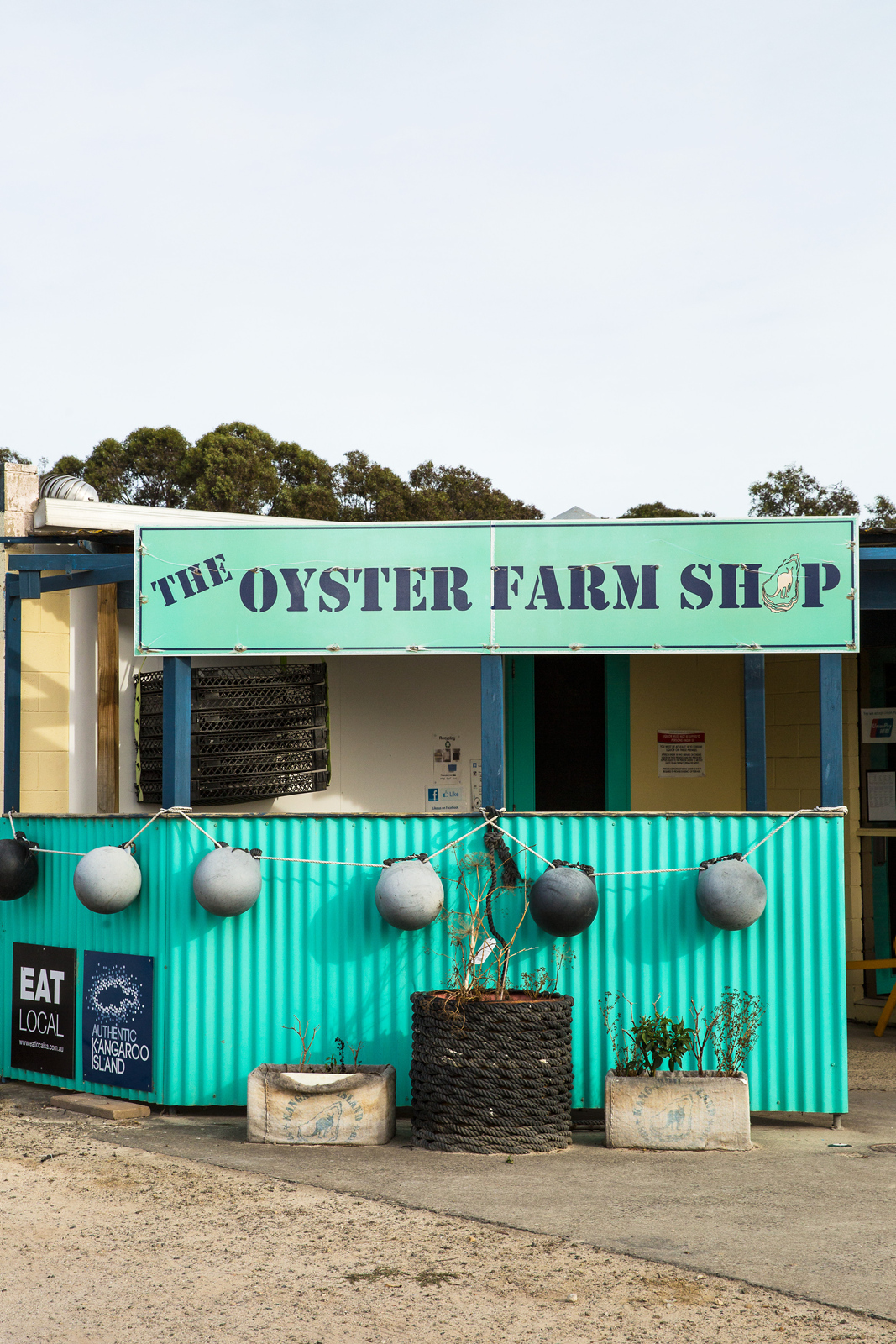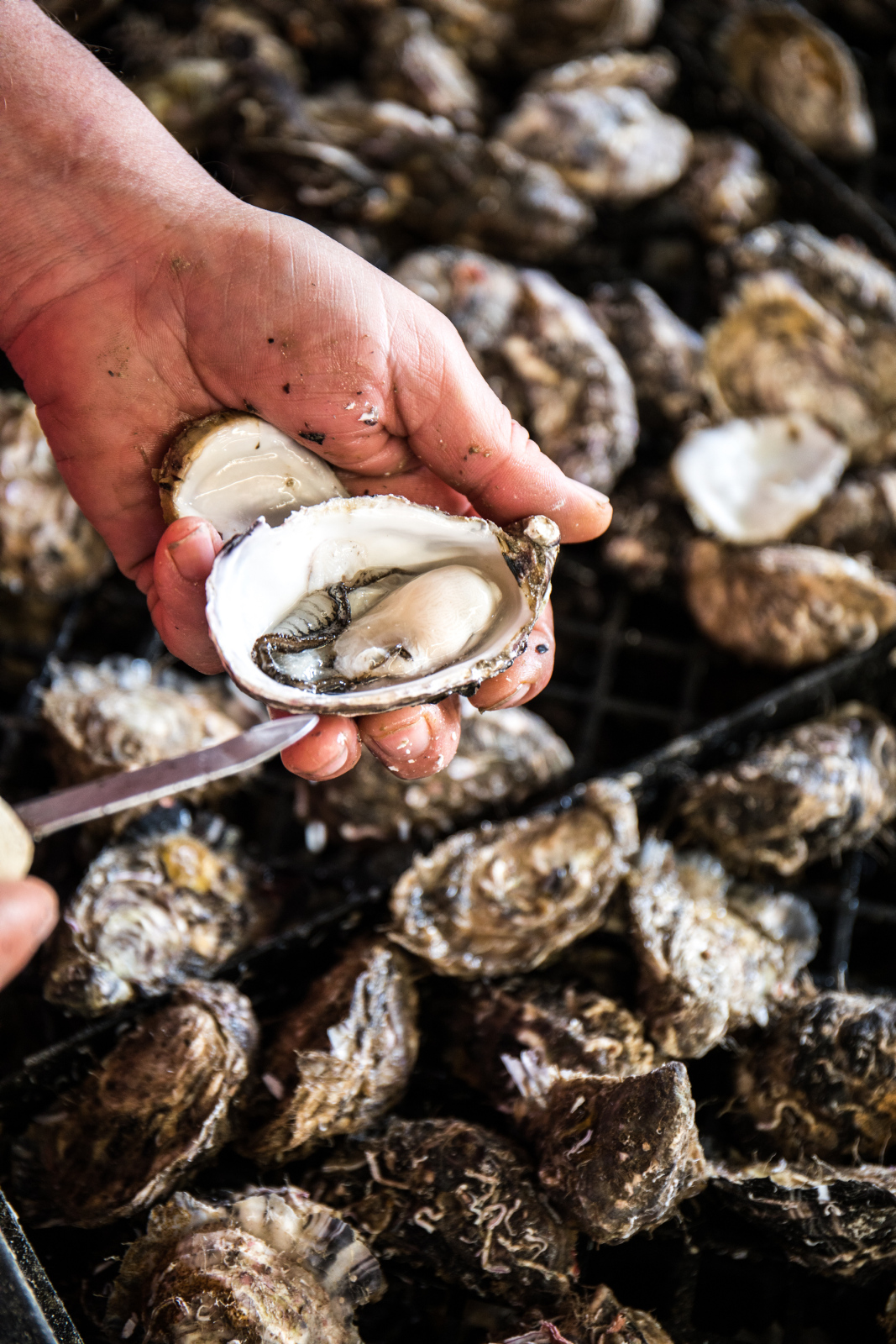Few foods inspire such strong reactions as oysters, but for seafood lovers the sweet, creamy molluscs are the pinnacle of indulgence.
South Australians are lucky to have some of the most highly-prized oysters in the world right on our doorstep, and after several years of under supply the industry is preparing to once again be the toast of the town.
Why are oysters in short supply?
Like fruit fly in the Riverland, Pacific Oyster Mortality Syndrome (POMS) is enough to give any oyster farmer nightmares. When the disease was first recorded in France in 2008, it decimated the local oyster industry before moving across Europe and Asia and hitting Tasmania in 2016.
Swift quarantine measures protected the oysters growing in South Australian waters, but because the vast majority of our spat (baby oysters) came from Tasmania, no new stock was introduced until local hatcheries could be set up. By late 2017 local farmers were running out of stock, and because it takes 18 to 24 months for oysters to grow to full size there was a significant lag before the new oysters were ready to be harvested. Now, POMS-resistant oysters are being developed to safeguard the industry and after several lean years, this season will see a slight rise in production before local farms once again reach full capacity next year.
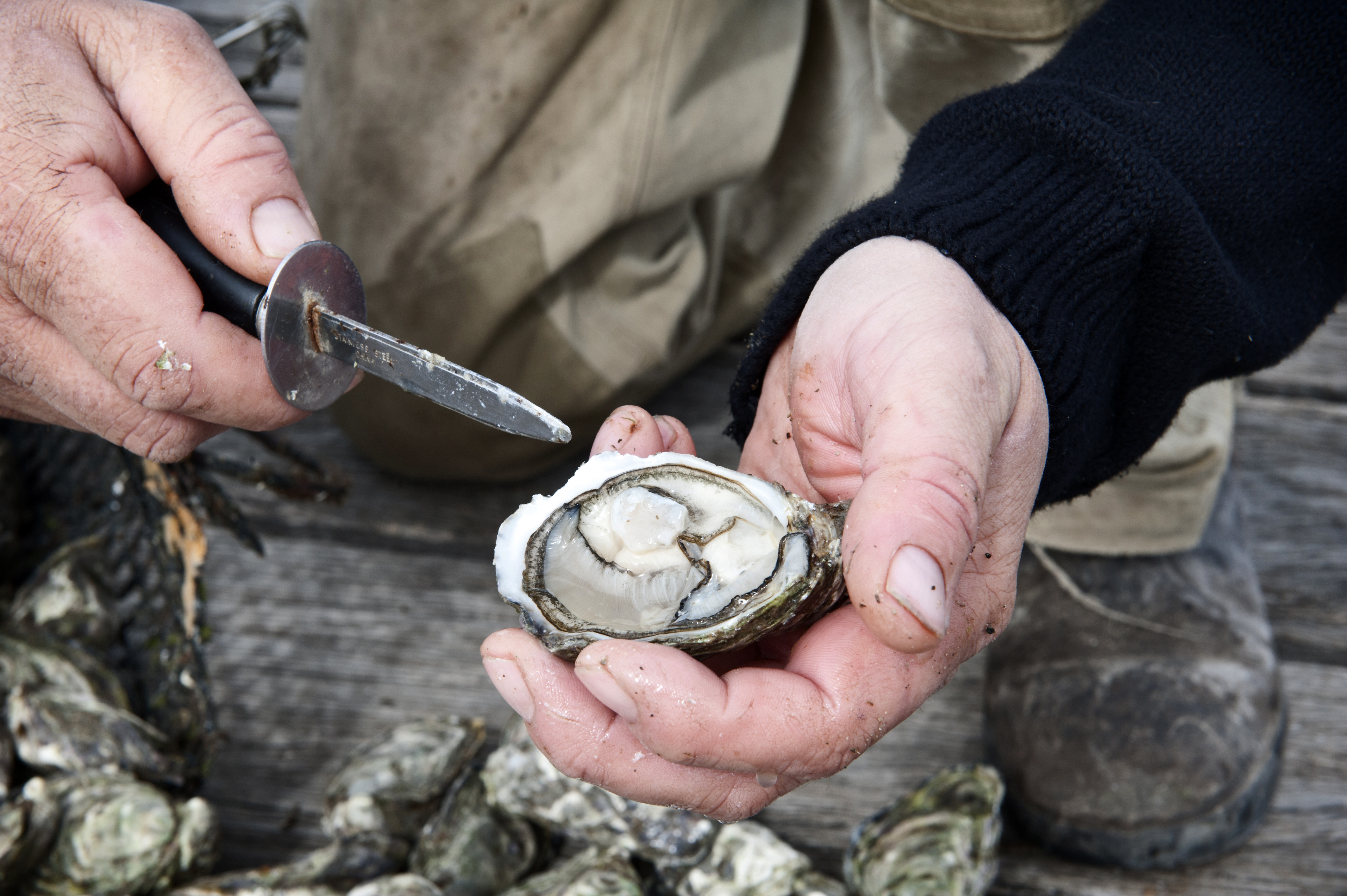
When and where to find the best oysters
Winemakers talk about terroir, but oysters reflect their environment even more strongly. They’re filter feeders and pick up all of their nutrients (and flavour) from the waters they live in, which is why those farmed in South Australia’s pristine waters are so highly sought after. According to Amanda Rowe from Kangaroo Island’s Oyster Farm Shop, “every growing region has a slightly different taste” and she describes her oysters as having a fresh saltwater flavour with cucumber and melon tones. Over in Coffin Bay, the saltier, high-iodine oysters are crisp and juicy with fresh fish notes, an intensely sweet ocean burst and a savoury flavour with a hint of asparagus. But one thing is common to all oysters, no matter where they come from: the fresher, the better, and there’s no place to get them fresher than direct from the source, whether it’s the Oyster Farm Shop or Coffin Bay’s Oyster Farm Tours.
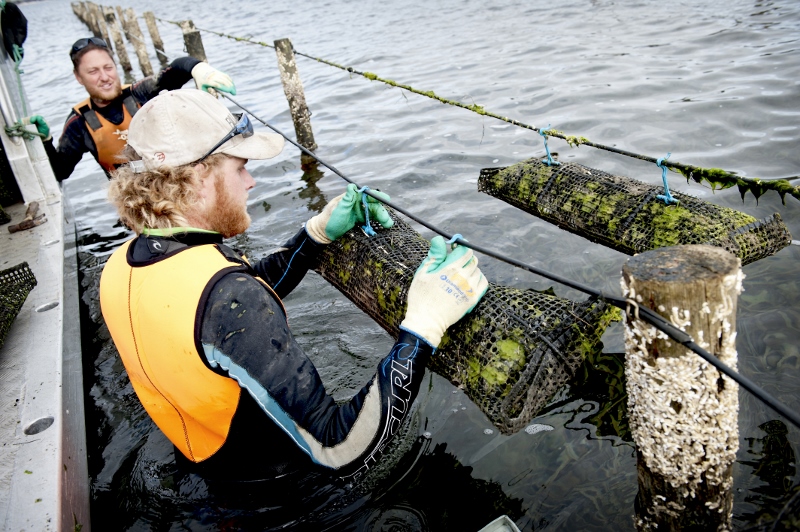
As for when to eat them, forget the old story about avoiding months containing the letter “r”, which is based around seasons in the Northern Hemisphere. During winter and spring the fat, succulent oysters are at their best and while they spawn once temperatures begin to rise, new spawnless oysters have been developed that are perfect for eating over the summer months.
Want to learn more?
Amanda Rowe says that as well as being delicious, oysters have many environmental benefits. She calls them “the canaries of the ocean” because they filter huge amounts of water and can detect tiny changes in pollution or rising acidity. You can see a farm in action at the Oyster Farm Shop in American River, which lies across the road from the wharf where oysters are graded and packed in sheds. They’ve recently launched daily land-based tours of the facilities, or you can watch the freshly-harvested oysters bring shucked at the shop (at full speed, a shucker can open about 100 dozen a day). Most importantly, you can taste them afterwards, or even get a platter with other local seafood like abalini (baby abalone), marron and King George whiting.
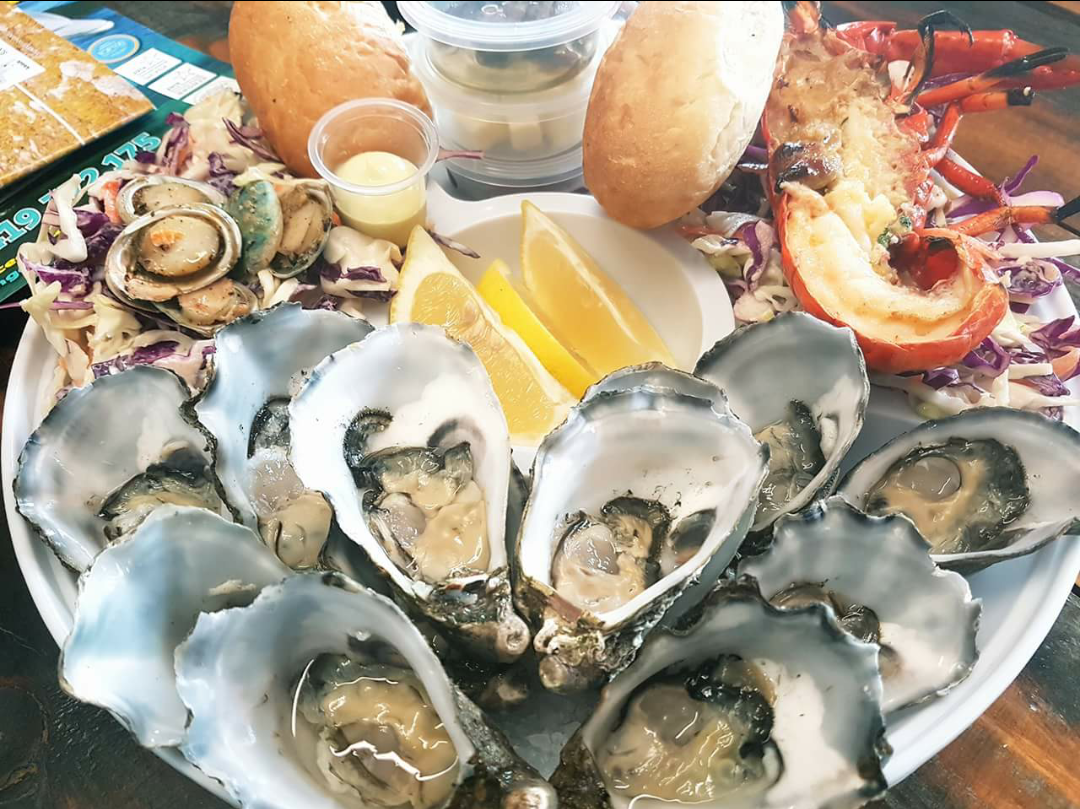
For an even more hands-on experience, Coffin Bay’s Oyster Farm Tours invites you to don a pair of waterproof waders and walk out to the semi-submerged “saltwater pavilion” on a functioning lease. There, you’ll learn about the history of the area and how to shuck an oyster before putting your new skills to good use, accompanied by a glass of riesling or even a bottle of sparkling.
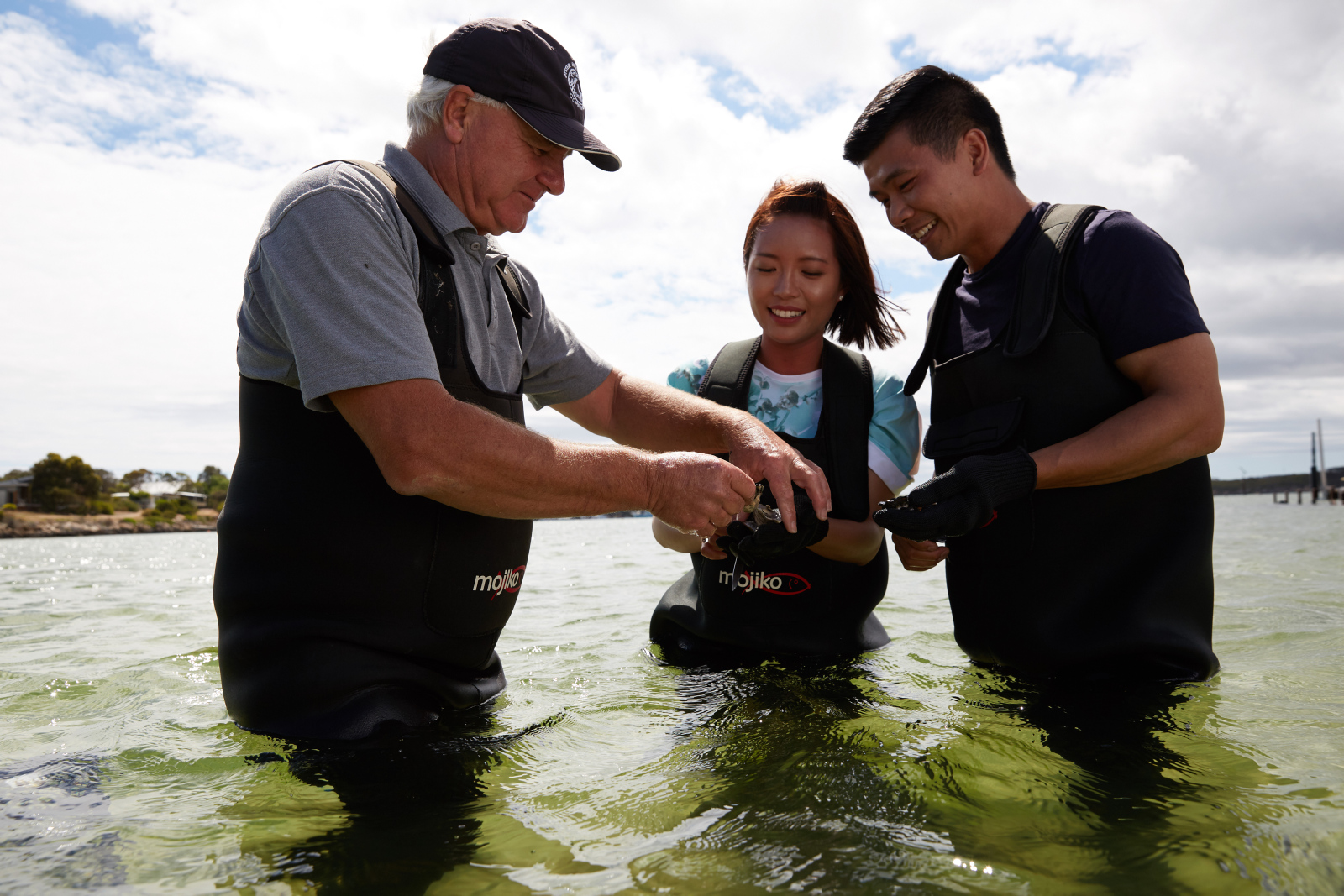
Find out more about:
The Oyster Farm Shop (Kangaroo Island)
Oyster Farm Tours (Coffin Bay)
WORDS Alexis Buxton-Collins
